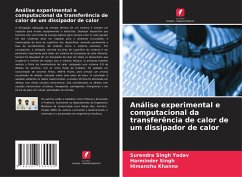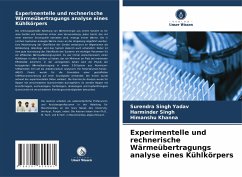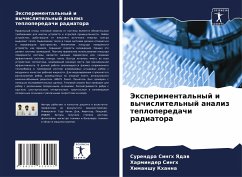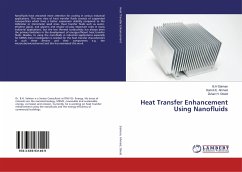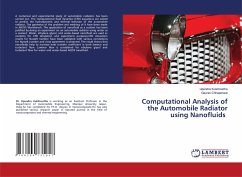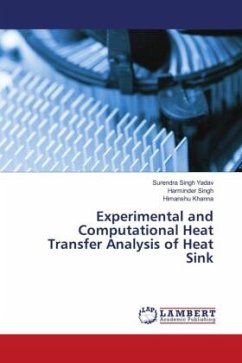
Experimental and Computational Heat Transfer Analysis of Heat Sink
Versandkostenfrei!
Versandfertig in 6-10 Tagen
29,99 €
inkl. MwSt.

PAYBACK Punkte
15 °P sammeln!
Proper dissipation of thermal energy from a system is always a requirement for many equipment and industries. Any device that runs using external power source always generates heat. The generated heat in such systems must be expelled to the surrounding. Maximizing the surface area of the devices generally enhances the cooling rate. However, it makes the system bulky. Therefore, a proper utilization of the surface area of the system is an important parameter to have an efficient heat dissipation system. It was always desirable to have a heat sink in the all devices that occupy minimum space wit...
Proper dissipation of thermal energy from a system is always a requirement for many equipment and industries. Any device that runs using external power source always generates heat. The generated heat in such systems must be expelled to the surrounding. Maximizing the surface area of the devices generally enhances the cooling rate. However, it makes the system bulky. Therefore, a proper utilization of the surface area of the system is an important parameter to have an efficient heat dissipation system. It was always desirable to have a heat sink in the all devices that occupy minimum space with maximum effectiveness. The present work analyse conjugate heat transfer physics in a 3-D system of aluminium pin fins, with air as the working fluid. A finite volume solver, ANSYS Fluent has been used in simulating a staggered pin fin arrangement placed over a base plate. The solver is validated using the experimental data. The thermal analysis has been performed on fins with various crosssections. Consideration is given to fins having circular, hexagonal, pentagonal, triangular and drop-shaped cross sections with various inlet velocities.





